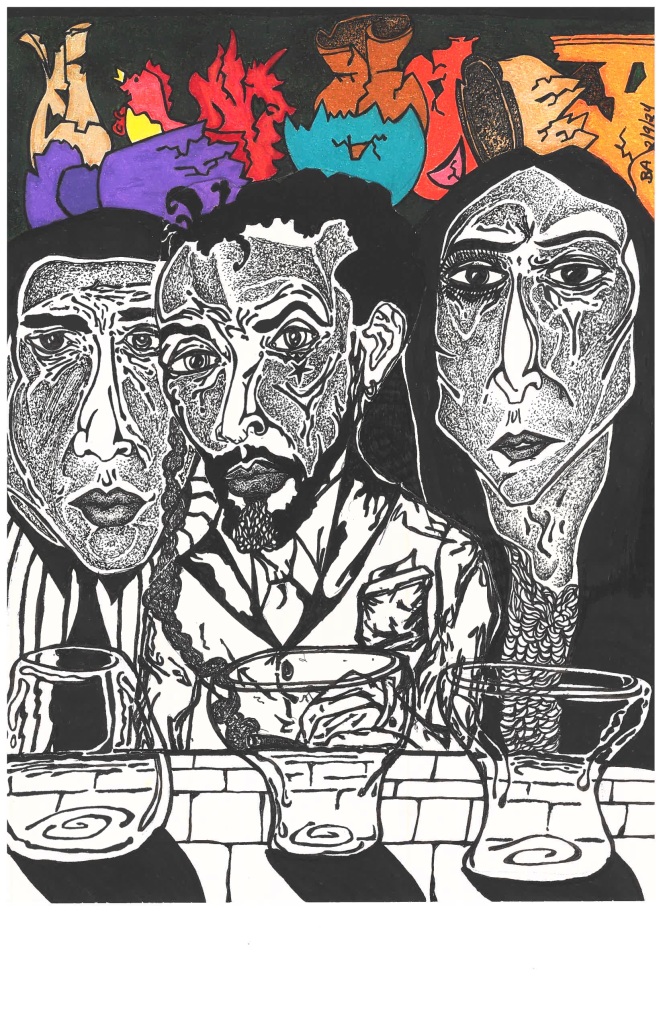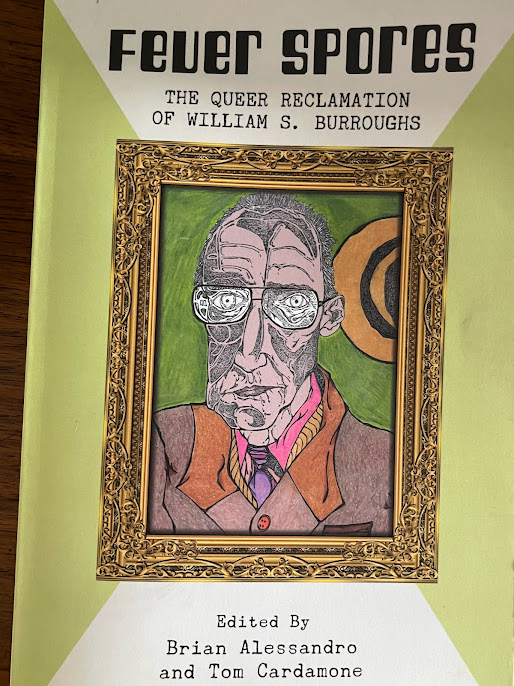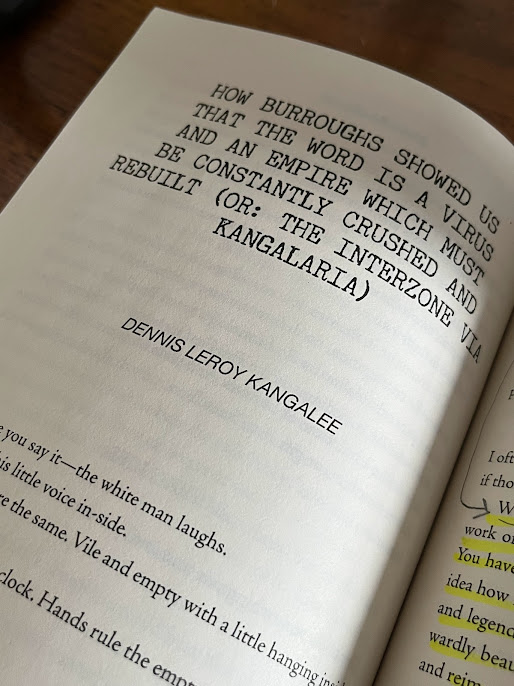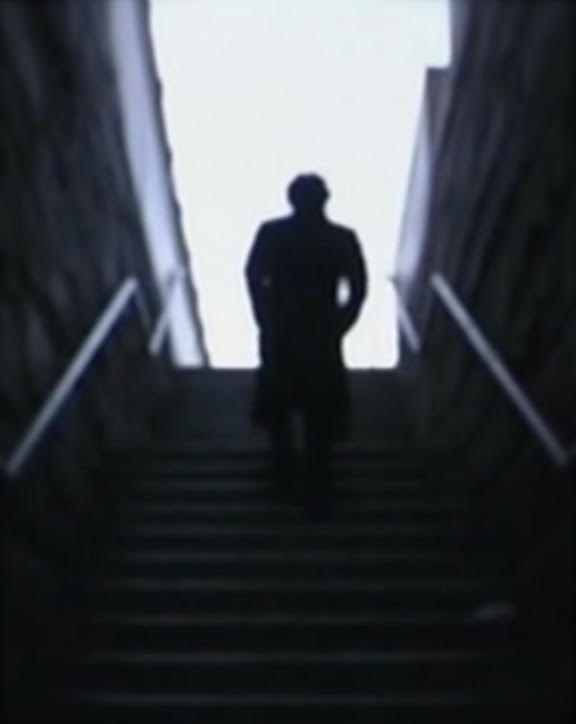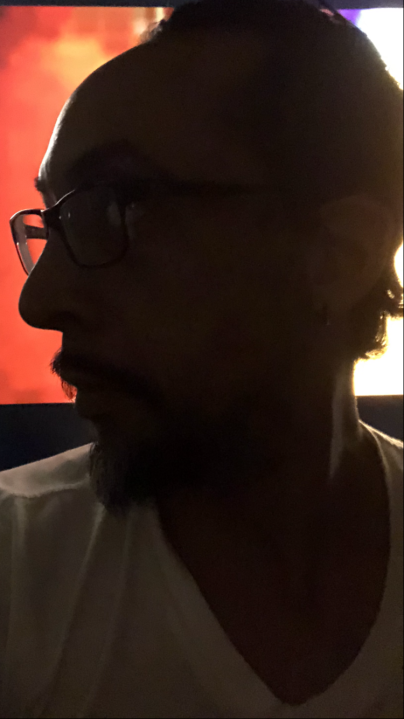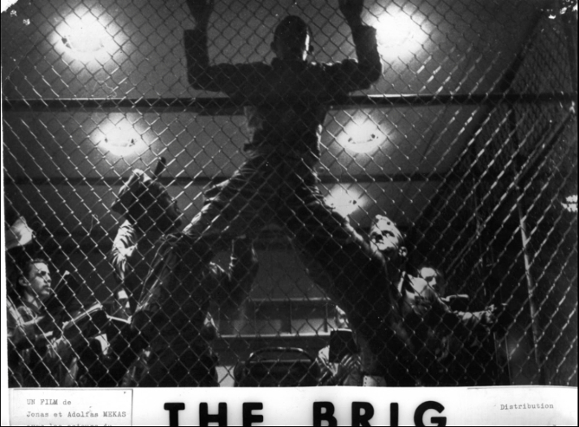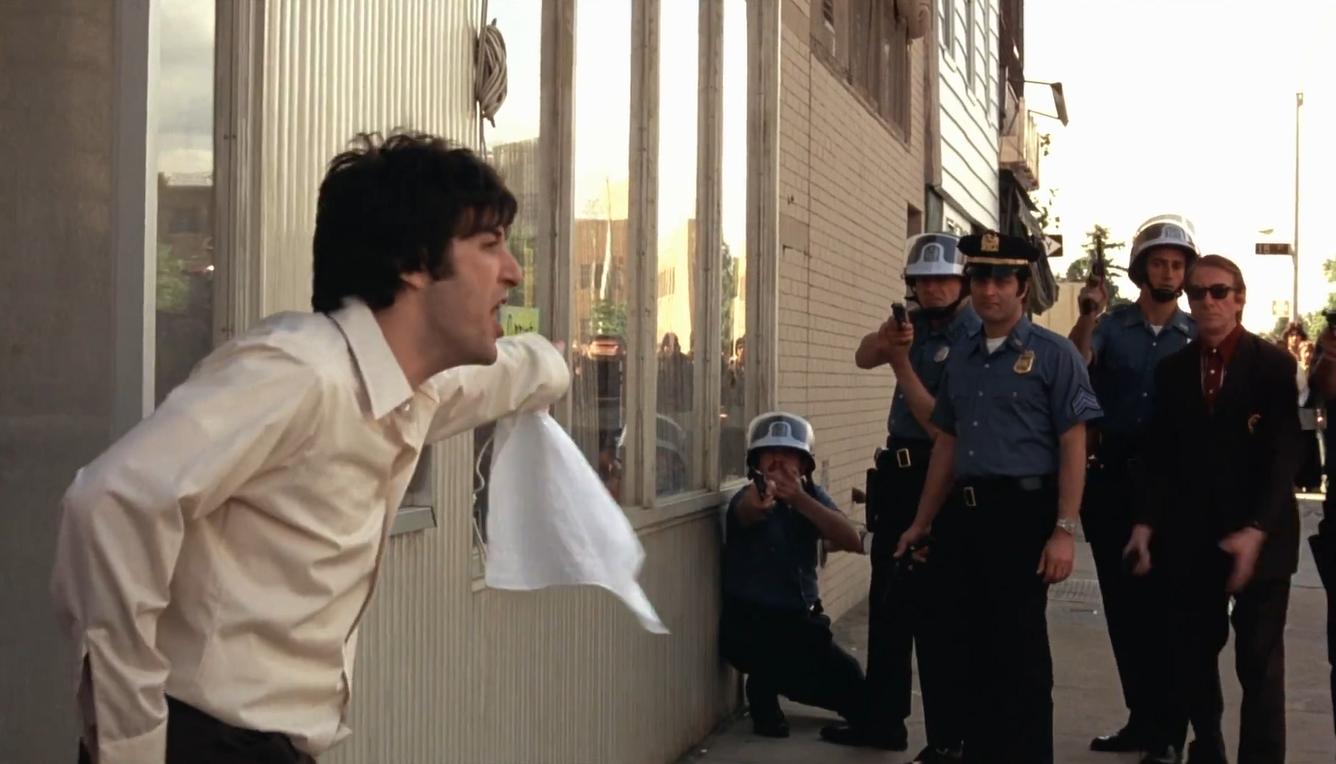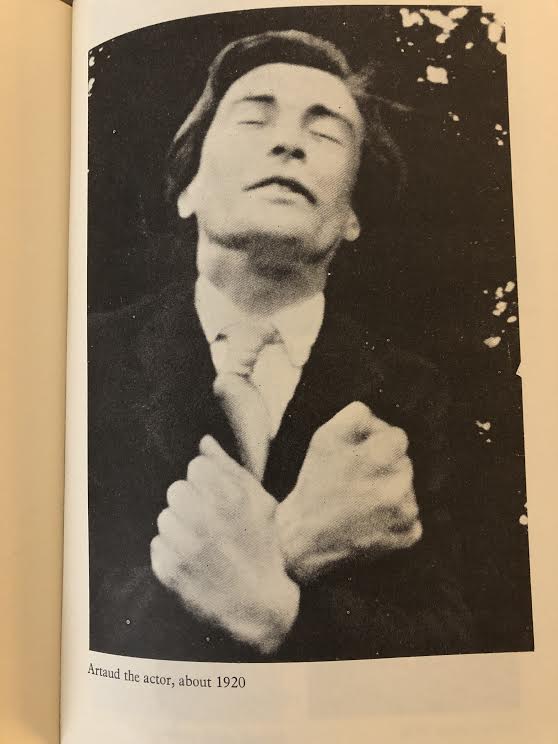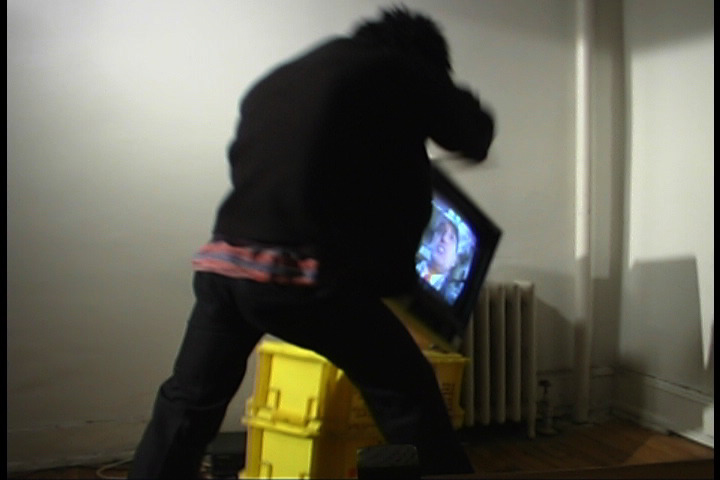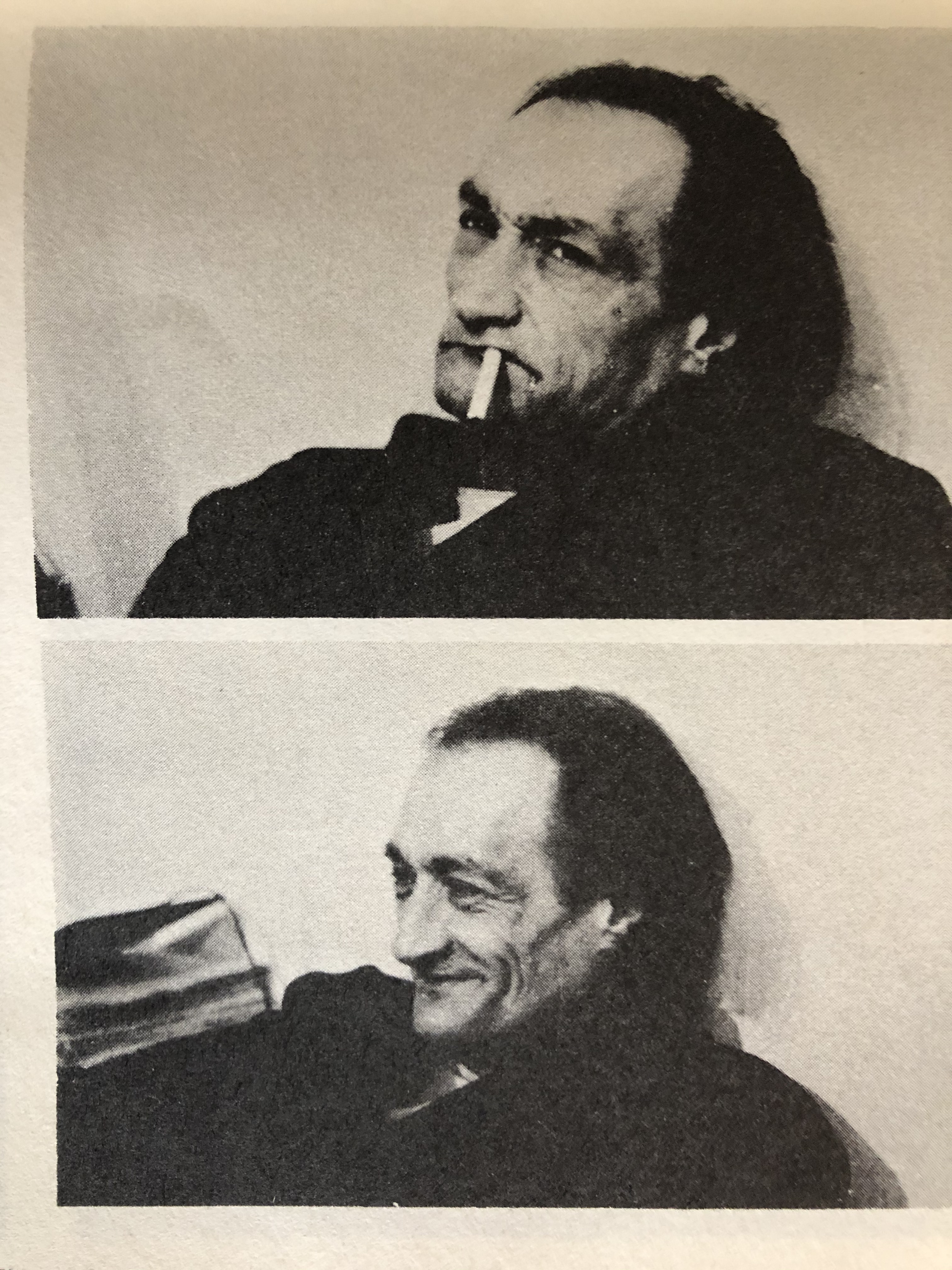“It’s a truism that blacks have to outperform whites in similar situations. More is called on for the part of a black than a white. He cannot have the kind of personal controversy in his life that a white person has…I remember when I was very young and very angry and I wrote this movie Taxi Driver. Spike Lee does not have that privilege; he doesn’t have the privilege to be angry. Society won’t let him. It’s too dangerous for a black person to be that psychopathically angry at whites, the way that white character in Taxi Driver was at blacks. It’s just not allowed to him.”
– Screenwriter Paul Schrader , upon viewing Spike
Lee’s film, Do The Right Thing in 1989.
From Manthia Diawara’s book Black American Cinema
(p.194)
***

The Anti-Spike Lee: “As an Act of Protest” promotes sweat, urgency, raw photography, theatrical acting and lo-fi production. It was a bold gritty film that became the hallmark of revolutionary guerrilla film-making and represented a turn in independent Cinema in 2001.
Guerrilla Filmmaking & Resistance
Introduction to the original screenplay for the film As an Act of Protest
I wrote As an Act of Protest over a period of eleven sleepless nights.
It was completed at one a.m. on Friday, August 19, 2000.
The first draft was over 180 pages.
I had a sinus infection and this was also the morning I finally quit my “survival job.” The joke had been on me, though. Your day-job pays your bills, but it is your art that enables you to survive. It seems fair to say that over the past three years I have been doing just that: surviving. After staging various plays from the African-American canon throughout New York City’s feverish summers in Greenwich Village, the garment district, and in Harlem; and after dwelling in the melancholia that lingers in the air like a perfume in the midst of (and after) any of the recent police brutality or “racial incidences” (from Louima to Shaka Sankofa), and after turning to drugs for comfort since I’d been continuously alienated by some of my “living idols,” and several failed relationships with various women (long and short), and after cyclical family affairs that have always erupted and sometimes ended in police arrests, and after being a victim (yes,victim) of racial ploys and even brutal attacks causing me to feel like Joseph K – constantly finding myself “on the run,” from “them,” and after an honest, but failed, attempt to bring Ed Bullins’ play “Goin’a Buffalo,” (my ode to the American Dream) to the screen, I finally confronted myself. It had been at least three years since I really took a personal snapshot of my soul; I was always doing something to avoid the demons head on – trying to bury it in my art, always looking for a new play, always being busy.
Busy. Busy. Busy. After a while all you are doing is being busy. One mustn’t stage a play just to stage a play. Art for art’s sake is ridiculous. But if you allow yourself to stop, to refuel – then you realize we go up only to come down. And, once again, you are left to deal with yourself. Many lonely nights will force you to re-acquaint yourself with yourself. No sex. No drugs. No TV. No form of escape just naked introspection. He’s a real nowhere man living in his nowhere land…
Yes. That is what happens. When the camel meets the lion who meets the child – no matter how painful, you cannot escape it. And all three of you go at it in that four cornered room. It’s like going cold turkey when you have thoughts in your head that you know you have denied or repressed. Repression creates neurosis. It’s a dam that one has to break, and when the gates are flooded with these potentially dangerous honest emotions and ideas, the result is not unlike As an Act of Protest. I agree that most directors are frustrated writers. However in the theatre it is easier to create that common link; easy to bridge your own inclinations with the author’s if you really understand that author. In film, you are able to go even deeper into your own psyche. That is why, I suppose, it is voted as being the most definitive medium or form for the Director. Here I don’t have to compromise anything.
This is what attracted me to film in the first place, but also what scared me about it. To have bits and pieces of your self smeared all over the screen is some heavy shit. There’s nowhere to hide. It all hangs out. But if my favorite Hip Hop artists have used their styles of music to conquer their personal fears and espouse their political autobiographies – why can’t the new young black directors do the same? True auteurs should create movies about what they know, who they are, their interests, and about the strangeness of their lives. By looking at his movies, James Cameron does not strike me as particularly interesting. On the other hand, I watch Chameleon Street, and say to myself “Wendell Harris is a guy I’d like to have a cup of coffee with.” It’s all personal taste in the end (the most frustrating thing about art), but it proves that people will always appreciate honesty. We’re lied to way too much in our daily lives from the society we live in. Why pay ten bucks to have someone “lie” to you through bland, petty bourgeois, “entertainment”? That is the difference between Dead Prez and Busta Rhymes. The former does not lie, but the latter, unfortunately, basks in it. To create, to paint, or write, etc, – is to confess. You play both
parts: Priest and Sinner. And I would like to truly thank the people around me who allowed me to confess, to go inside and come back out when it was over – no matter how difficult, immature, tiring, arrogant, or abusive I may have been to them. I admit I am a brat.
I hate that part of me, but admit it nonetheless. Once I admit it, perhaps I can begin to change.
Fundamentally, that is what art does for its creator.
It helps to rehabilitate. And I hope I can stay strong, continue to be positive and not let them (you know who they are) get the best of me. Sometimes I feel like Cairo, the actor in As an Act of Protest. Obviously he’s part of me, all the characters are. I just hope those who feel as I do, who are as sensitive as I have become will not take that as a sign of defeat. It’s quite the opposite. Society wants to vaccinate us, cripple us emotionally. People actually didn’t understand why I was so fucked up the day of the Diallo verdict. Granted, I was not surprised at the outcome – but I was crushed, depressed even. Severely. And it has taken a toll on me. I just deal with it in a different way – I repress my anger, my frustration, which is why I am able to be so confrontational in the plays I stage or the scripts I write. There is a monkey on my back – and I am trying to get rid of it, you understand? Racism in all its forms is the most destructive force in the universe.
It has created men and women who suffer with it, of it, breathe it and are accustomed to it. It creates mad men. And everyone in America alone feels this sickness. And the ones who are the victims – suffer with it even more so than the carriers of the disease.
In 1995, I had a nervous breakdown while a drama student at the Juilliard Conservatory. I was nineteen years old. My mother, a strong, beautiful, but troubled woman, tried everything to get me better. I saw every therapist in New York, took every prescriptive drug in the book. Even spent two weeks in the ward at Paine Whitney Mental Health Clinic. Of course nothing worked. The problem was that the problems were not being confronted head on – I was at the whitest school in the world (where the teachers still brag about the good old days of Al Jolson! You want names? I can give them to you), I was torn between pursuing art and my dream of a new black theatre, which I was just discovering, and making quick money – which my family would have readily appreciated, but I was down. Deep down in the mire looking up thinking ”Why are there are no real established black art schools?” All my actor friends were stuck on that European classical-training crap and there was no talking to them. And these conservatory brothers actually called me “Militant.”
Militant? First of all at Juilliard I was doing Shakespeare (not exactly the bastion of Black Nationalism) and second of all – anybody who knows me knows I am meek and mild. I have dated women of all races, am open to all kinds of positive influences and art and philosophies. I am quite layered. I am not into labels to begin with – “Militant,” “Nationalist,” “Communist,” “Revolutionary Democrat,” “Third World Revolutionary,” “Democrat,”
“Republican,” — that stuff means nothing to me.
I am a Human Being first and foremost. A Black Man second. An artist, third. That’s about as far as I take labels – strip things right down to their base that’s what I always say.
Anyway, at nineteen I found myself really wondering about my future and about the welfare of black people just in America alone. After I happily got kicked out of Juilliard (I swear I would have burned the place down anyway), I began to take time and really piece myself together. A sister I began to date once told me that if I really wanted to “do something” I should use my art to raise consciousness. Of course, nearly three years later when I ran into her in Columbus Circle, I scared her away when I told her my idea for As an Act of Protest:
a black actor who cracks up when his brother gets killed by white police officers, and the actor seeks revenge by killing the Mayor’s son – an ultimate “act.” She said I was crazy. To my face, she said I was crazy. This is a black woman who got on me for not being tough enough, who would not spend the night with me unless I ran out the grooves on a Bob Marley disc, and she’s now dressed in Donna Karan garb, hair straight as could be, and she’s telling me I’m crazy, that I hate the white man because they won’t give me a chance on Broadway. I’m angry because I don’t have any “higher education,” no college degree, no nothing. She proceeds to say I have abandonment issues (which is the only thing that’s true here, I ain’t gonna lie to you) and that I should open my eyes to the New Black Renaissance taking place. The new Black Renaissance? I asked her what that was, where is it? And how come I wasn’t invited? You know what she did? She took out a magazine, it might have been Ebony I can’t remember, and beams at the cover which shows Puffy Combs and Jennifer Lopez and the headline says something about Martha Stewart “getting her groove on” in the Hamptons with Puffy Daddy and Jigga. “We’ve arrived,” she says. The sister told me how I, if I wanted, could be living large in two years and then crosses the street to greet her white boyfriend, no younger than sixty, and a Lexus. Needless to say, this only continues to wrack one’s brain, brainwashed black people only continue to depress and mortify you. You realize how colonization continues to affect us. Also, you don’t know at times who you want to kill – the white racist pigs from Bush to Howard Stern or the sellouts like Robin Quivers or those “Institution Negroes.” This is enough to make you go insane. Enough for Nat Turner’s ghost (I swear) to visit me and talk to me at three a.m. when I’m stone cold sober for real. My thesis in Protest is that black young men and women need to be able to have as many outlets for these problems and ills they see and experience. In my film, one of the characters says “Black people don’t need therapists, we need our own conservatories.” It’s true. Very, very true. Take it from me. It is not the answer, but it will begin to help.

Che Ayende (Luis Laporte) as the conflicted actor Cairo in “As an Act of Protest” (2001)
A psychiatrist at Paine Whitney asked me once to describe to him why I felt so paranoid, afraid of society, and “stuck on,” the race problem in America. Since I seemed so “paranoid and alienated,” he asked me if I had read Kafka. I told him I did and I told him if he could dig Kafka, how come he couldn’t understand my situation? In fact, more black people could probably understand Kafka and all these alienated white boys better than white people themselves. We don’t weep for them as these phony white intellectuals do, because we don’t have to. Any group of people who have the horror of slavery embedded in the back of their minds, in the recesses of their “ancestral remembrances,” you know that little portion of the brain that carries mother Africa in black people everywhere – don’t need to cry for anyone except ourselves. I told this young “hip” doctor that I felt like the Last Poets’ song “This is Madness!” He asked me who the Last Poets were. You see what I mean? Where’s the black hospital where we can run to in times of discouragement, times when you really understand the blues, and all that stuff.
Instead of Colin Powell cocktailing with Rudy Giuliani, he should be planning on ways of making sure that the younger brothers don’t end up screwed up like him! (I know, smile, though, we all gotta dream a little bit)
“…And Diana Ross
how can you be Supreme and sing songs of Black Love when your mouth is overrunning with the Sperm of the trigger.
And William Styron is going to commit suicide when he finds out that Nat Turner made love to his great great grandmother. And he has taken our most violent and militant leaders and
stuck lollipops up their asses to pacify their Black power farts. And he is beginning to assume that all of us were born under the sign Taurus the Bull because all we do is BULLSHIT!
This is Madness…
This is Madness…
All this madness is madness…
Madness this is…Please stop all this Madness!”
— The Last Poets
As an of Protest seeks to capture the essence of this poem. And if its madness around you, it is your duty to report on it.
Protest is also an attempt to re-ignite a new cinema.
I am a theatre director making a movie – that’s all it is. If I thought Protest could work as a play, I’d have staged it. Thus, I realized that the time had really caught up to me. It is well beyond the age of movies and mass media. It is a sort of “Age of Images.” For real. A kind of celluloid Halloween. A Neo-Icon-Figurine-Poseur-Fetishism.
Everything reeks of Entertainment Weekly or People magazine. More and more movies (from Hollywood ofcourse) look the same; even the so-called “independent film” movement has lost its luster. I mean, think about it: you can only tell a sex, drugs, and rock and roll movie so many ways. Within this barrage of images – TV, newspapers, films – the only way to compete and battle America’s freaky web of pop culture, blatant racism, not so blatant racism, and that beast called television (“the white man’s magic,”) is to align your own self behind a series of images, tie them to a missile, and set it off. And if constructed correctly, no matter how small, missiles will destroy.
“The theatre is dead.” The West has been saying that repeatedly over the past sixty years. They were wrong up till now. As an Act of Protest reflects some of this changing tide and I have tried to show its political implications. Because, in the end, after war, after our technological advancement folds in itself, the theatre will remain. It’s all around us.

Theatre is present in all life and the real new breed of American filmmakers need to turn a blind eye to the Reservoir Dogs of the American Beauties and find themselves. Express their thoughts for real. Black filmmakers, in particular, need to really wake up.
Spike Lee has always complained that cinema has not discovered its Miles Davis or Toni Morrison. He’s correct, but I do not know what he himself is doing to alter this besides producing “Black Hollywood” movies like The Best Man. The Best Man is, in artistic terms, what Diana Ross is compared to Billie Holiday. Yes, black folks need films showing us loving and fighting for and over each other – but that film does not even begin to come close to anybody I’ve ever seen or known in a relationship. Love is not simple or mundane as that movie. No, not all – it’s quite messy and very complicated. Black people will play Bob Marley’s “Get Up, Stand Up,” blast Wu-Tang’s most innovative tracks, and spout the poetry of Amiri Baraka or Sonia Sanchez and yet will still think that a film like The Best Man or Shaft is good enough for them. This strange affiliation and knowledge of directing, storytelling, and displaying of images must change. And I know there are a lot of talented, radical, sensitive people out there. But where are they? Certainly not behind the cameras.
As Hip Hop music (I’m not talking about Li’l Kim or Jay-Z here) evolves and moves into a whole new century, so does a new generation of consciousness and Black Art. Because contrary to the media and Eminem, hip-hop is, and always was, black expression. If white people have not found their own form, there new genuine styles, that is not our fault. And it will not be my responsibility to make them feel “included” in my world. When was the last time a cop or a white man in the street went out of his way to make you feel secure? That type of stuff doesn’t even occur in dreams. True Hip Hop is the highest evolution of the black
aesthetic: from the Spirituals to the blues to folk art and jazz to poetry and the Revolutionary Theatre; from be-bop to Rap. And somewhere in the middle of all this is Rock and Roll. Phew…(And they call us lazy)
In art, every genre/style will run its course, the band the Roots warn us of these traps. One can only take a style of art so far before the American System co-opts it, dilutes it down, bottle and sells it like Coca-Cola and soon what once was an expression of pain or joy becomes mass-produced and on sale like sneakers or cigarettes. Everything is up for grabs in the West and we all continue (black and white alike) to deny it. Look around you at the state of just about everything. ”You can’t think so much” – even this is a bold-face lie. How can we think too much about anything? We only use ten percent of our brains. We do not think enough that is the problem. You want freedom? Force yourself to find a way, never stop investigating…The same with art. If you don’t protect it (like your children) it will be taken from you, and then you will be forced to beg on your knees just to have an “opportunity” to have someone read your work.
What kind of nonsense is that? Why should I fight my way into Hollywood so some old white man can tell me if he wants to produce my script? As if he is going to tell me if I’m talented or not? How would he know? And shame on me if I do not listen to the encouragement of the Last Poets or my peers. What they say is real, is true. If I’m good, they’ll tell me. Not some old white man who runs some Hollywood Studio. And if I’m trying to win an Oscar that just proves how shackled my mind is from colonization. It’s a slave mentality. Miles Davis speaks quite eloquently about establishment awards in his autobiography. If you need more convincing, at least take it from him if not me…
So what else do I see? Well, I can see that theatre has been confined to the dusty annals of Conservatories and college programs and New York Times articles. Emerging black playwrights have never had it so hard. Unless, maybe, you are Suzan Lori-Parks or August Wilson no one will produce your full-length drama. And if they do, in some supposedly high brow theatre, your black play will be staged by a white director. That would be like Outkast begging David Geffen to produce their next album. Surreal? Read on, it gets worse.
In the states, the great black theatre directors, some perhaps by choice, have completely lost touch to the new ensuing generations because not only have they failed in coming together to sustain a Black American Repertory Theatre system, they have not had any cinematic ventures. Lloyd Richards, August Wilson’s famous director-collaborator, was not even allowed to adapt his landmark 1959 production of Hansberry’s A Raisin in the Sun to film. No, Hollywood had a white director do it. Why? Because they know the power of the image, of cinema. As we all know, it combines two essential ingredients imperative to any propaganda or mission statement: IMAGES (ideas) and MASS DISTRIBUTION. With film you have an opportunity to reach millions of people around the world. Like a novel. Just think of the movies available on videocassette. Your message, literally, can go on tour. It is a shame that the world (or just our country alone) does not recognize theatre-men like Gil Moses, Robert Macbeth, or Owen Dodson as major innovators and artists. Had they been able to direct films like white theatre masters such as Peter Brook or even Laurence Olivier, perhaps Gordon parks would not be the only “old” black filmmaker we know of in America.
There’s Oscar Micheaux, the great black film pioneer – but his name relates more to myth as opposed to actual work we can see since his films are pretty much out of print, lost, or destroyed. Elia Kazan, Orson Welles, and Ingmar Bergman were all theatre directors before they even thought about making movies. They conquered one form, then logically moved into another – spreading their wings that’s all. Welles was my age when he landed in Hollywood to embark on the creation of his classic Citizen Kane. The kid had never even seen a camera before, nonetheless know anything about montage or cuts or dubbing. I have had some ignorant people try to psyche me out by saying to me “Man, you can’t do a movie. You’re a theatre director. You’re a stage man. What do you know about cinematography or editing? I bet you don’t even know who Lumiere was. You may be able to stage a play but that does not mean you can do a film.” That’s true, but that doesn’t mean you can’t. And if Welles was only twenty four when he made Citizen Kane then what is the difference between his youthful zeal, intelligence, talent, and desire to explore and say, Mos Def’s? Must I remind you that Michael Jackson was only twenty-four when he made Thriller? There is no difference here. I am a director, which in most quarters is a vague title. A lot of people don’t really understand a stage director or filmmaker. They equate it to an old white man’s medium. Which translates to: intelligence, sophistication, and “understanding of rules.”
Bullshit. Complete bullshit. I realized this when staging “Blues for Mister Charlie” at the National Black Theatre in 1999. A theatre rep from Lincoln Center refused to believe that such a young black man could direct a three and a half hour play and have it be a critical and financial success (whatever that means). If I were forty, she would have believed it.
Or, if I was homosexual perhaps or blind and deaf in one ear – they feel it would be more likely. Why? Because it would mean to them that I was a little “off,” or different and this could account for my talent. If I made a hip hop record (which is what they prefer all young black male artists to do) than they would want to celebrate me. This is not good. Not good at all.
Where am I going with all this? What is my point? It’s
this: in order for a complete re-birth or renaissance, if you will, and I don’t use that word lightly – African American filmmakers need to get bold. All of us, directors, writers, cinematographers, editors. We need to get dirty. We need to be outrageous, unconventional, honest, clever, and as vicious as we have been in other art forms or musical genres. We need true Hip Hop films, aesthetically speaking. This could, ironically, even inspire a new theatre. But black auteurs need to look at ourselves for inspiration not Steven Speilberg, not the Coen Brothers, not Fellini. Admiring one’s work is one thing, using it as a model of a standard work from which to base your own work is another. Especially if its not someone from your own house. How could a black independent filmmaker way out on the fringe – look to Oliver Stone or Brian De Palma for practical advice or cultural support? Ideas he could get, even immediate inspiration, you may even learn something from any type of art – but then what? Something gets lost in the translation. It would be like Women using Men as a model on which to base parenting. Sure, we’re all fruits. But there is a difference between an apple and an orange. And what happens when you discover that your favorite Hollywood filmmaker has major split-racist tendencies or extreme right-winged proclivities in his movies. I appreciate honesty in art, and if you have hangs up show them in your films – but give me a break. That black film student will watch certain films and begin to really get depressed:
“Wow. Martin Scorsese has weird stuff about black people in almost all his movies. George Lucas merely makes fun of “colored” and Eastern peoples by converting Asian-African-rooted-type names into “fancy” futuristic Star Wars lingo: The degobah system? Obi-Wan Kenobi? Sounds vaguely Japanese, Middle Eastern with West Indian lilts to me. Allah must be shaking his head. It’s sick. I go into the video stores to buy more copies of the Godfather, Taxi Driver, the French Connection, Indiana Jones, The Deer Hunter, Saturday Night Fever, Goodfellas, Pulp Fiction, Donnie Brasco, or even “light” Middle-class fare such as Chasing Amy or Jerry McGuire. Black people (or other people of color) are put down or killed off or severely mocked in any one of these pictures (we believe if they wouldn’t, then these films wouldn’t be gritty and “realistic”). Some of these movies are considered to be great works of American art. And some of them are – Coppola’s mysteriously cloaked The Godfather is not unlike a Shakespearean Tragedy play about a royal corrupt family. As brilliant as it is, shouldn’t I be spending more time watching Bill Gunn’s Ganja and Hess, which came out in 1973 and played in the theatres for only a week. The film is a classic and teaches me, an African-American, more about myself than Coppola or John Huston could. It’s also one of the most technically thrilling and artistically driven films I have ever seen. Spike Lee should spent his time on getting copies of Gunn’s work out on video as opposed to watching Knicks games and drooling over “dolly shots” in his movies. However, even Spike wants us to all believe that he is the only legitimate black filmmaker.
Poor Charles Burnett, the maker of the cult classic Killer of Sheep. This milestone came out the same year as Star Wars and has not been seen ever since. While brothers are applauding the heroes from a galaxy far, far away – they’re completely inured to their fellow brethren right in their backyards. Huey P.Newton wrote a stunning essay and review of Melvin Van Peebles’ revolutionary Sweet Sweetback’s Baaadasss Song and hailed it as a new vanguard cinema for black people – an example of real artistic-political storytelling that the black audience could appreciate. Huey wrote that he hoped this would inspire a whole revolutionary genre of black pictures. Instead, the white people of Hollywood saw they could make money by having a brother on screen and decided to further the ante by “gambling” on pictures like Shaft (by Gordon Parks, ironically, whose brilliant The Learning Tree has been forgotten even though it was the first major Hollywood movie by a black Writer and Director! Of course, the rest is history and like they have done to Rap music – everything caved in; the Blaxploitation era arrived and all the racist, stereotypical White Man’s Nigger-Propaganda-movies flooded the world and artists like Bill Gun, Burnett, and even Van Peebles himself vanished into thin air. No wonder Huey P.Newton died in a crack house: he had no movies to go see.
How does one battle this? Well, if Charlie Parker walked into a room and all he heard was some ucky-ducky brass version of lily white tunes like “How Much Is That Doggy In The Window?” and the standard Top 40 pop music before jazz, he’d walk over to the white band, pull the saxophone player by his neck and say in that English accent that he was known to have mocked “If I hear this shit one more time I’m a go insane. Somebody betta play that instrument and somebody betta play that shit right. Fuck these chords and lame rhythms, we better come up with our own ways of playing before we lose our souls like these white cats playin’ this shit.” You find your own way of playing the instrument. That’s it. An incident like this changes the course of history and brings black people into themselves again. You have your way of handling the camera, I have mine. Consciousness and talent is all I ask for. Of course Genius wouldn’t hurt either.
Black Americans along side, if not more than, (yes!) William Shakespeare have contributed more than any other group or individual to the English language than anyone in history. Even News Broadcasters try to sound “hip” on television. It’s absurd. It’s not a question of getting angry, it’s a matter of doing something constructive. We created Rap music with a cardboard box and some words, man! Like mighty magicians, we always created something out of nothing. Didn’t need this, didn’t need that. Didn’t need some big studio, eighteen guitars, twenty-four track recorders, thirty different percussion instruments or drums. Just a beat and our minds. Do you realize we have sent thousands upon thousands of dazzling messages into the night this way? So, how can a black filmmaker do the same thing? How can I learn to do in my art what the Last Poets, Public Enemy, Run DMC, Tupac Shakur, Outkast, Common, or Dead Prez have accomplished in their field?
Where is the key? What are the means I must have to do this? It’s right in front of us. We live in it: the digital age.
The answer is Digital Video.
DOGMA 95 & DIGITAL VIDEO
Every so often a movement in art comes along that clears the decks and allows the lion in us to roam.
Explore.
Enables us to see differently and experience something – otherwise too familiar – in a completely different context and allows the artist to re-define his way of working. Like Peter Brook’s classic treatise on theatre “The Empty Space,” the Danish filmmakers’ concept of Dogma 95 has introduced a fresh and new way of making movies. Conceived in 1995, the aim of Dogma 95-films is to “strip cinema naked.” Meaning the goal is to “force the truth out of characters and settings,” by using the bare essentials of cinema: a hand-held digital video movie camera, natural light, on location sound, and real sets. To some degree this “actors cinema” (the focus here) is not new, of course, for John Cassavetes and even early Martin Scorsese championed these ideas decades ago. However, what Dogma 95 has achieved is remarkable. By just using a digital camera, a bare bones crew, no special effects, and an ensemble of daring actors (called “Liberators,” in the Black Revolutionary Theatre) they have proven that quality, not quantity is what counts. No string-budget films can now be made by using digital video (which have amazing resolution and splendid transfers when blown up to 35mm. Even your man, George Lucas is shooting his next Star Wars movie completely on digital).
Thomas Vinterberg’s stunning digital feature The Celebration is a perfect example of this vanguard cinema. Do you see what has happened here? The writer no longer needs a computer or typewriter – he can make his literary masterpiece with just a pad and pen!
Digital video and the Dogma 95 concept has empowered and enabled filmmakers all over the world who grew up thinking they needed Hollywood money and equipment – to produce their own personal feature films. All you need is a camera and a story. Guerilla filmmaking. The tide is slowly turning…
If Rap artists could get down with just two turntables, black directors – left out and fighting against the system, must quit their whining and look to digital video. Unless you want to spend years raising money to shoot on 35mm, which gets more expensive by the day, you’ve got to be practical and praise the lord that you now have the means. Power to the People, a poor man’s cinema verses the White Capitalist Power Structure-Epi-Center of the Western World. Why more African American filmmakers are not using this new technology to make their statements is beyond me. Like with our music, we need to assault cinema, tear it up, break it down, blow on it, scratch it, make it spin on its head. It’s there for us to redefine yet we are so colonized we continue to believe that White is better; that we have to compete with Hollywood’s standards of assembly-line filmmaking: Special effects, fancy lights, script convention. It’s as if we want to make bad movies as good as they do and neglect our very existence or representation in the process. If you have a million dollars at your disposal, perhaps we could have another (slightly different) discussion. Thus, take what you can learn – but don’t emulate what is not you or for you. Nina Simone had no desire to want to be the “next” Judy Garland. Similarly, Saul Williams was not trying to copy TS Eliot by rote.
So simple, yet so difficult. Those chains are hard to break. Sometimes I forget I even have them on. So the Dogma 95 films are now on the cutting edge and films worldwide are being produced on digital. Now, I ask “Where do the New Wave of Black Filmmakers really fit in here?”
THIRD CINEMA 2000
In the 1960’s, a film theory called Third Cinema was created in Africa, Latin America, and Asia. These “third world filmmakers,” such as Indian master Satyajit Ray and African griot Haile Gerima joined to form Third Cinema in an effort to “transform society by educating and radicalizing the film audience through subversive cinema.” (Definitely sounds like what Miles Davis, Coltrane, or RZA from Wu-Tang did with music or sound itself). Adhering to the philosophy that all film is ideological, they experimented with film as a weapon against the cultural imperialism of Hollywood. Like a Katherine Dunham dance or one of Baraka’s plays. In Africa, specifically, filmmakers were inspired by the writings of Frantz Fanon and Marxist film criticism and formulated new revolutionary film theory that radically re-interpreted the relationship between film, the viewer, and the director. Third cinema characterizes traditional film directors of the West as agents of capitalism who “sell” to promote their passive audiences movies that promote colonial stereotypes and consumer-society values.
Latino filmmakers such as Fernando Solanas and Ocatvio Gettino produce “films that directly and explicitly set out to fight the system.” In present day United States of America, we make Hip Hop records that are incendiary and hold back on nothing. We need films to go along with these albums. I wanna see a film that’s as bold as the Aquemini album. Unfortunately, Umar Hassan still has it right: Niggers are scared of revolution…
Revolutionary cinema must resist the temptation to be “clean,” or sterile like the movies from Hollywood and television shows. The radical Hip Hop cinema of this new century must not limit itself to mere “denunciation,” or appeal simply for reflection, it must be a summons for action. Some of the techniques written into Protest in fact are examples of Third
Cinema: fusion of documentary with fiction and use of unresolved endings that are traditionally used to invite audience discussion. Our African brothers such as filmmaker Souleyman Cisse’ have been very successful at this.
By using the Dogma 95 techniques and the political and cultural urgency of Third Cinema, I am declaring As An Act of Protest a THIRD CINEMA 2000 picture and the first of its kind for the New Wave of Black Filmmaking in the Twenty First Century. These are the principles:
1. Your film must be shot on digital video (or Super
16mm).
You can only use standard 35mm if you easily have the money in your budget. (But to shoot on film and lose financing during post production and editing is ridiculous and can now be avoided at all costs!)
2. Your film must seek to be honest and revealing. How screwed up are Human Beings? Don’t answer it, ask it.
Exposure of the ills of our society, the racism, sexism, poverty, war, problems of communication between men and women various forms of prejudice must be attacked and criticized. These are the ingredients of humanity; what separates us from Animals are our emotional, psychological, spiritual, sexual, and political problems. We create these horrors. The
animals you so admire – don’t.
3. Your film must be a narrative “feature” film. Focus
on character driven stories that are surrounded by topical events of our time. If your film is a period piece, do not forsake authentic emotions and real situations for “real costumes” or period set pieces.
The Actor must be at the center of your film and you must exhaust all ways of getting true, raw, performances. Stop at nothing in order to reveal real moments of pain or joy in the lives of your characters. Never sacrifice a good performance for a “cool” shot or hip lighting. Use improvisation as a technique.
4. Ignore script convention: you don’t need to always
have the standard 120 pages of script, arcs, denouements, plot points, etc,. You are the author of your film and must make a film you would want to see, not what some screenwriting book advises that you make us see. The script must be written by an African American, if not you, and if it’s a collaboration at least one of the writers must be black. Likewise, lead characters must be black or of African Ancestry.
5. Your film must stress emotional and political
volatility, the confusion, and stress, and horror of living in whatever conditions you wish to explore – housing conditions, interracial relationships, the collision of Pop stars and real working people, capitalist terrain, etc,. You always have two goals:
to serve the socio-political message and to create emotionally laden stories through use of deep, complicated characters. Drama and Political Messages.
One must not overwrought the other.
6. Welcome various styles and ideas in one film. Like
life, it should capture aspects of the multi-faceted events of our daily lives, no matter how bizarre, funny, or sad. Also, do not be afraid of using varying musical styles to stress altering moods.
7. You must understand and use Hip Hop as a frame of
reference for the conception of your film. Meaning, you are, in essence, making a Hip Hop film and must apply its familiar characteristics: Bravado, Righteousness, Defiance, and Heart.
8. Explore ambiguity, minimalism, and excess at
various intervals of the film. Embrace unresolved endings.
9. Do not pander to your audience and you MUST NOT
show gratuitous jokes, nudity, drug use, or violence – unless that is the subject of your work. Do not try to appeal to pop culture or make attempts at being hip.
Trust yourself and your intelligence.
10. Understand that, before anything else, you are a
GRIOT and your main concern is to move,
enlighten, politically arouse, and teach your viewers.
Never stop challenging. And work with as many different types of people on your crew: a variable of energies is important during production.
Note: “Griot” must precede Director’s name if credits are employed. For example, “The Movie” Directed by Griot John X.
On stage it is important to “spill the blood” and fill that empty space. In cinema, it is important for black directors to use a camera the way the great musicians played their instruments or approach filmmaking as influential novelists did with the written word. There is so much to be explored. As many different types of black people there are throughout the world – that is how many ways of filmmaking there are. Dare to fail.
Find the jazz in you. Play your riffs, find your flows. And when you are finished, create your own way of taking a bow.
* * * *
Thanks to Amiri Baraka for writing “Dutchman,” Woodie King, Jr. for your landmark book “Black Theatre:
Present Condition,” one of the major influences that got me off my ass, the work of James Baldwin, Franz Fanon, Lorraine Hansberry, Antonin Artaud, and Spike Lee – as well as John Lennon, Marvin Gaye, Miles Davis, Sidney Lumet, Martin Scorsese, John Cassavetes, Robert Kramer, Raoul Peck, Bill Gunn, Wendell B. Harris, Euzhan Palcy, Haile Gerima, and Robert Bresson – for the brutal honesty in their work.
Thanks to the Last Poets – Abiodun Oyewole and Umar Bin Hassan. Your albums have astonished and provided me with inspiration throughout my short life. Umar and Dun, thank you specifically for our many telephone conversations and your honest words of wisdom and support. Umar, it was fate that brought us together at the Lenox Lounge on 125th street. Life does that and at the strangest moments, you meet the people who you have admired and you find that after having met them and re-reading their work, you admire them even more.
You have encouraged me as a writer and I have appreciated all of your comments and thoughts on my work.
Special Thanks to Rick Schmidt’s now classic book “Feature Filmmaking at Used Car Prices,” Steve Kahler in Florida for making me a true believer in DVD, Ray Carney, the people of Harlem, Ali Lynch for understanding, Haile Gerima’s stunning university speech on filmmaking, the music of Dead Prez and all “conscious” Hip Hop: the Language of the Underground Railroad.
Dennis Leroy Moore
(aka: Dennis Leroy Kangalee)
August 26, 2000
Harlem, NY
This was the original introductory note included in the very first draft of As an Act of Protest four months prior to the shoot.
An edited version was later read as a speech at the Oberia Dempsey center.
